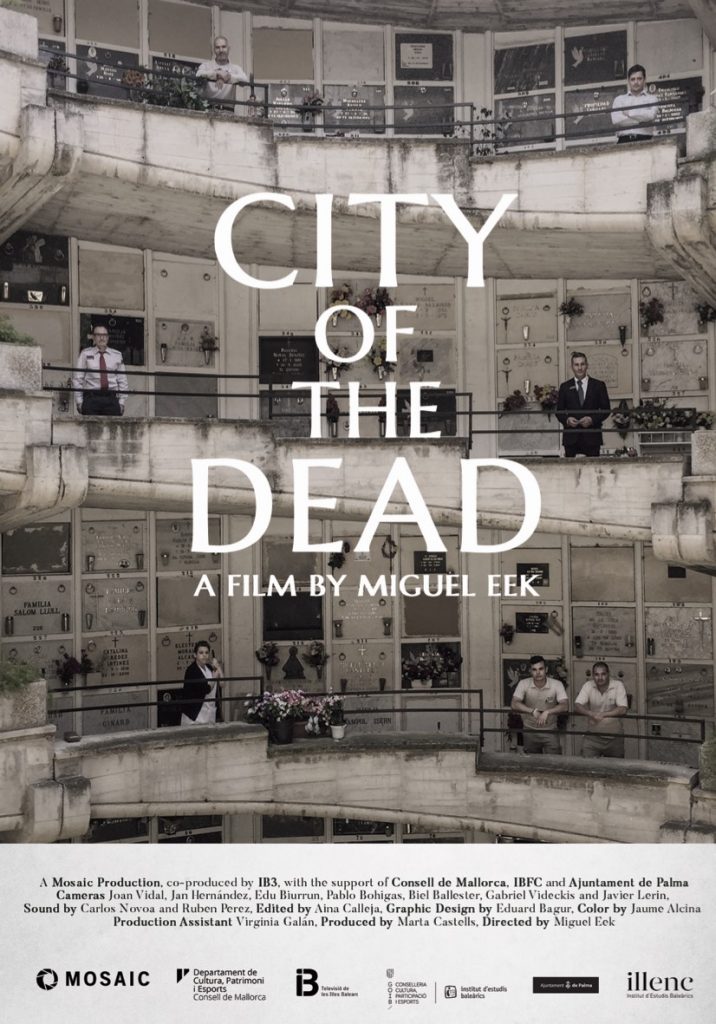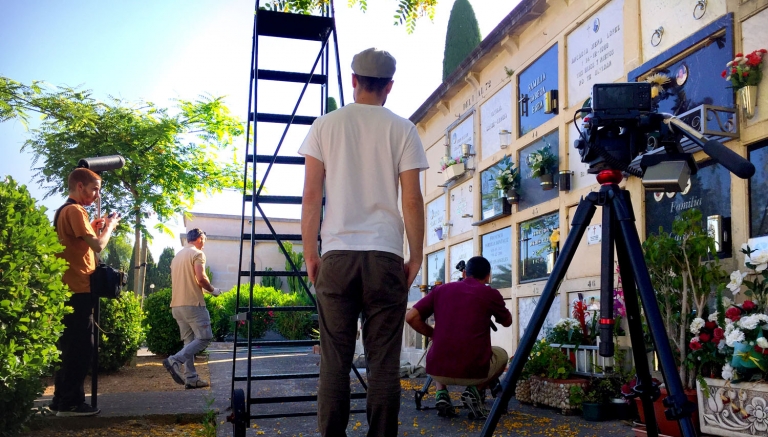Almost two years have passed since I began to think about “City of the dead” after finishing the documentary “Life and death of an architect“, which gave us enormous gratifications in exchange for many tolls: censorship, pressures and a filming style that I needed abandon to reconnect with a more direct language. In that context I made a series of visits to cemeteries and funeral homes to dismiss relatives and friends. In those farewell ceremonies I perceived among the attendees a general disquiet towards death that was distracted by any other subject. In parallel, I was positively surprised by the temperance and earthly awareness shown by the workers of the funeral home and the cemetery. Could they give us some clue to our escape from death?
For a few weeks I accompanied tanatopractors, gardeners, security guards, funeral agents or undertakers. The apparent calm with which they related to death confirmed that there was a documentary there.
I spent days talking with them, I recorded hours of interviews, of which I did not use any in the documentary, but that helped me to choose and define the main characters. I soon understood that my characters did not have weight conflicts. It’s our own complicated relationship with death that led the conflict in the documentary itself.
We formed a team of five people who lived intimately with the art of death, processes of which we knew little and badly. We started abruptly filming one of the hardest: the tanatopraxia. The smell and the sounds of that room overwhelmed us but soon I began to get used to the corpses. To the third time I was invaded by a sudden calm and I naturalized all prudence to death, I was invaded not only a tranquillity, but an unexpected courage about my own death.
We continue for months recording routine jobs of the elected workers. It was not easy to adapt to their rhythms. “Death does not wait” they said, and disappeared when we had all the prepared staging. Or, “Today don’t shoot me, I’m not feeling well.”
It was a challenge to follow the characters with two cameras on tripods, but in the long run it provided us with interesting material to draw linear sequences, without having to move around the set, becoming almost invisible beings that allowed the spontaneity of their movements and conversations.
I keep an excellent memory of all the workers, because during those months they allowed us to intimate and participate in their work without any limitations. They trusted us for a risky project without many guarantees around the result. We recorded dozens of hours inside and outside the cemetery that were not used but which I will always remember with all my gratitude. I hope the documentary lives up to its bravery.

